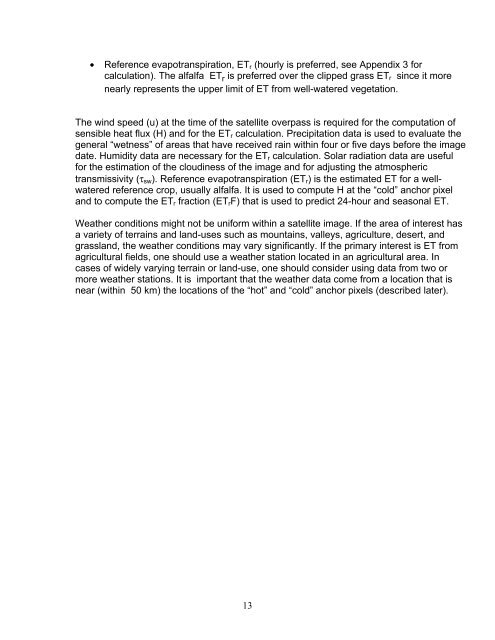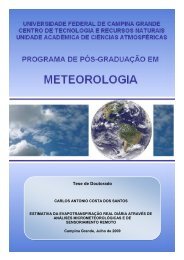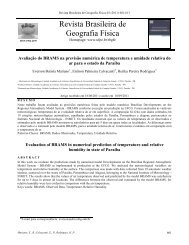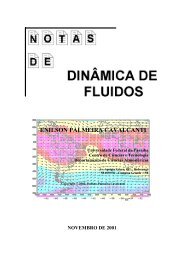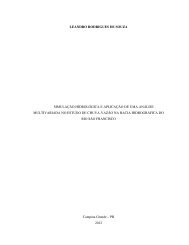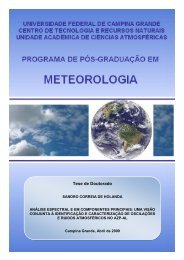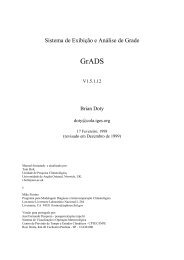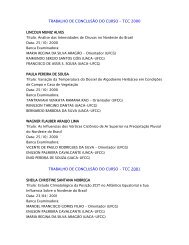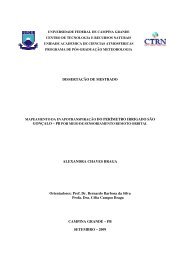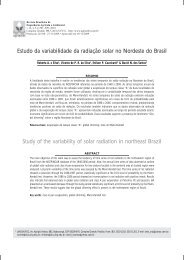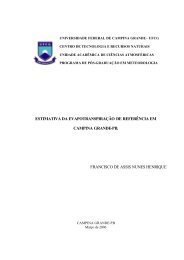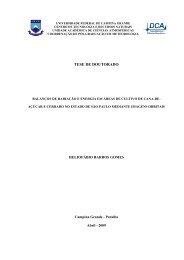You also want an ePaper? Increase the reach of your titles
YUMPU automatically turns print PDFs into web optimized ePapers that Google loves.
• Reference evapotranspiration, ET r (hourly is preferred, see Appendix 3 forcalculation). The alfalfa ET r is preferred over the clipped grass ET r since it morenearly represents the upper limit of ET from well-watered vegetation.The wind speed (u) at the time of the satellite overpass is required for the computation ofsensible heat flux (H) and for the ET r calculation. Precipitation data is used to evaluate thegeneral “wetness” of areas that have received rain within four or five days before the imagedate. Humidity data are necessary for the ET r calculation. Solar radiation data are usefulfor the estimation of the cloudiness of the image and for adjusting the atmospherictransmissivity (τ sw ). Reference evapotranspiration (ET r ) is the estimated ET for a wellwateredreference crop, usually alfalfa. It is used to compute H at the “cold” anchor pixeland to compute the ET r fraction (ET r F) that is used to predict 24-hour and seasonal ET.Weather conditions might not be uniform within a satellite image. If the area of interest hasa variety of terrains and land-uses such as mountains, valleys, agriculture, desert, andgrassland, the weather conditions may vary significantly. If the primary interest is ET fromagricultural fields, one should use a weather station located in an agricultural area. Incases of widely varying terrain or land-use, one should consider using data from two ormore weather stations. It is important that the weather data come from a location that isnear (within 50 km) the locations of the “hot” and “cold” anchor pixels (described later).13


